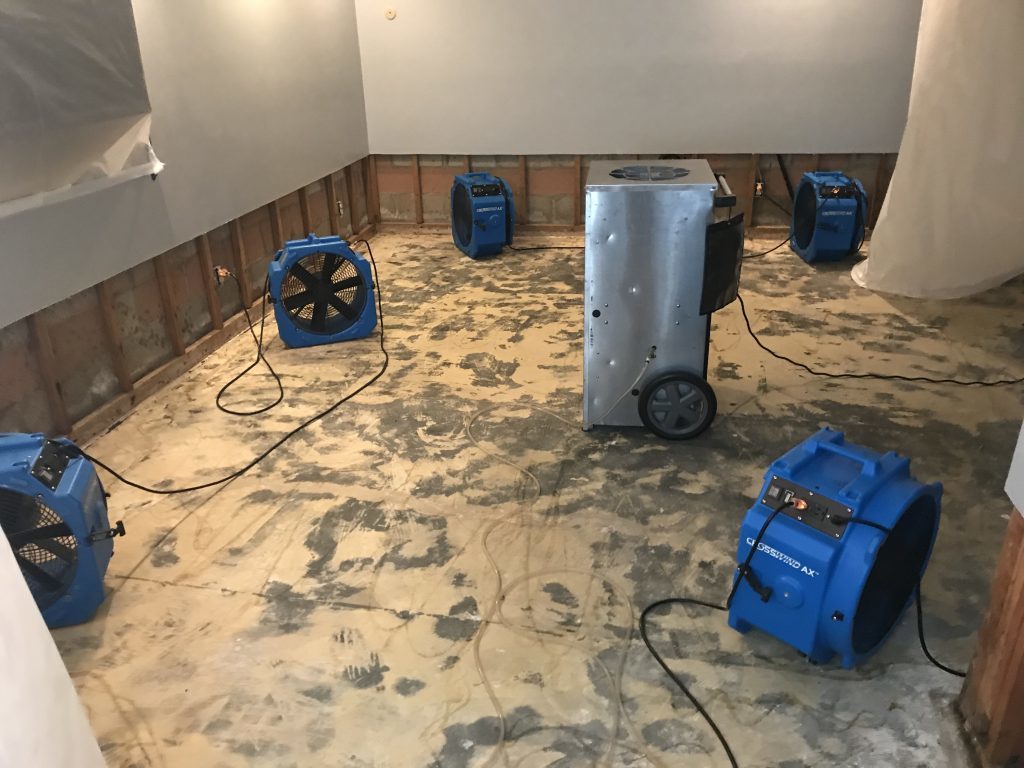Professional Water Damage Restoration Philadelphia: Rapid Response, Lasting Outcomes
Emergency Situation Water Damages Repair: Swift Feedback to Lessen Additional Damages
What specifically does emergency water damage restoration involve? By comprehending the seriousness and comprehensive nature of this process, you will get valuable insights into just how professionals tackle emergency situation water damage, guaranteeing a swift and effective action.
Relevance of Swift Response
Swift action is of utmost value in water damage remediation to reduce more damages and alleviate potential threats. When water damages takes place, whether because of a burst pipe, a natural calamity, or any other unpredicted occasion, time is essential. The longer water beings in a structure, the even more damages it can cause. This is why it is important to act rapidly and efficiently to get rid of the water and start the repair procedure.
One of the main reasons swift response is necessary in water damages restoration is to stop the development of mold and mildew and mildew. Mold and mildew can start to grow within 24 to two days of water exposure, and as soon as it takes hold, it can spread quickly throughout the afflicted location. Mold and mildew not just causes additional damages to the structure of the building but additionally positions wellness risks to owners. By responding quickly, experts can completely dry the area and prevent the growth of mold and mildew, lessening the need for comprehensive remediation and guaranteeing the safety and security of those involved.
Water damages can be ravaging, especially when it affects individual products of emotional or monetary value. Performing quickly allows specialists to examine the damage and implement ideal reconstruction methods to salvage as much as feasible.
Analyzing the Degree of Damage

During the evaluation, repair professionals thoroughly analyze the affected area to determine noticeable indicators of damages, such as water discolorations, deformed materials, and mold growth. They additionally make use of specific devices to find hidden damages, such as moisture meters and thermal imaging video cameras. This detailed analysis allows them to properly determine the extent of the damage and establish a customized restoration plan.
Evaluating the degree of water damages is essential because it assists experts prioritize their initiatives. They can recognize locations that need prompt focus, such as standing water elimination and drying out, to avoid additional damage and minimize the risk of mold growth. They can additionally figure out the areas that need repair services or replacement, ensuring that no damages goes neglected or unnoticed.

Water Extraction and Drying Refine
The water extraction and drying procedure is an important action in water damages remediation, as it includes the elimination of excess water and the extensive drying out of the damaged area to avoid additional damages and mitigate the danger of mold and mildew development. After assessing the degree of the water damages, the following step is to draw out the water from the damaged location.
This action is vital in preventing additional damages, such as structural damage and the development of mold and mildew and mildew. The drying procedure may take a number of days, depending on the extent of the water damages and the products involved.
It is very important to ensure that the affected location is entirely dry prior to continuing with any type of fixings or reconstruction. Failure to extensively dry the area can cause long-term concerns, consisting of damaged structures, moldy odors, and the development of mold and mildew and mold. As a result, specialist water damage remediation business employ wetness detection tools to ensure that the affected area is entirely dry prior to continuing to the following action.
Mold And Mildew Avoidance and Removal
Effective mold and mildew prevention and removal are important in water damage reconstruction to ensure the safety and stability of the afflicted area. water damage restoration philadelphia. When water damages occurs, whether from a ruptured pipeline, flooding, or a leaking roof covering, it produces a perfect setting for mold development. Mold and mildew can start to create within 24 to 48 hours after water damages, and if left neglected, it can spread out rapidly and trigger serious health and wellness threats
To protect against mold growth, it is necessary to address water damage immediately. The initial step is to determine and fix the source of the water invasion.
In instances where mold and mildew development has actually already happened, remediation is required to remove the mold and mildew and prevent its return. This includes the cautious removal and disposal of afflicted products, such as drywall or rug, to ensure that all traces of mold and mildew are removed. It is necessary to note that mold and mildew removal must be performed by experts who have the needed training and tools to securely eliminate and deal with mold.
Restoring the Affected Area

Firstly, it is important to extensively dry out the area to avoid any kind of further damages and to prevent the development of mold and mildew and mildew. This may include using specialized drying devices, such as dehumidifiers and industrial-grade followers, to eliminate all moisture from the affected surface areas.
When the location is totally dry, the repair process can start. This might involve repairing or changing damaged architectural components, such as drywall, ceiling, or floor covering floor tiles. It is vital to address any underlying concerns that might have caused the click here for info water damages, such as leaky pipes link or damaged plumbing, to stop future occurrences.
In addition, recovering the afflicted area may likewise include repainting walls, changing harmed fixtures, and thoroughly cleansing and disinfecting the room. This guarantees that not only is the location structurally sound, but it is additionally cosmetically pleasing and risk-free for occupancy.
Final Thought
Examining the extent of damages enables for reliable water removal and drying processes to be applied. On the whole, timely action and comprehensive reconstruction measures are vital to alleviating the negative effects of water damage.
Swift action is of utmost importance in water damage reconstruction to decrease further damage and reduce prospective dangers.Throughout the assessment, remediation professionals completely take a look at the afflicted location to recognize noticeable signs of damage, such as water discolorations, warped materials, and mold and mildew development.The water removal and drying procedure is a crucial action in water damages reconstruction, as it involves the elimination of excess water and the detailed drying of the additional info damaged area to avoid more damages and minimize the risk of mold development. After examining the level of the water damages, the next step is to extract the water from the damaged area.Reliable mold and mildew avoidance and remediation are critical in water damage remediation to guarantee the safety and stability of the damaged location.